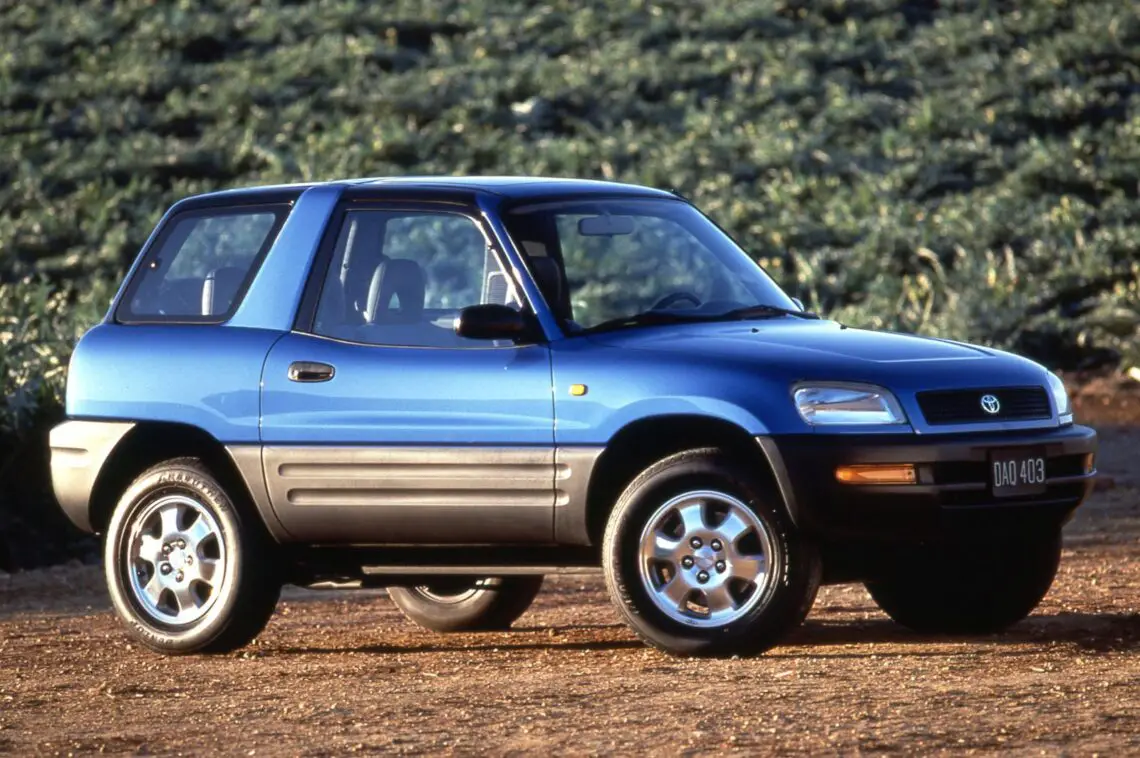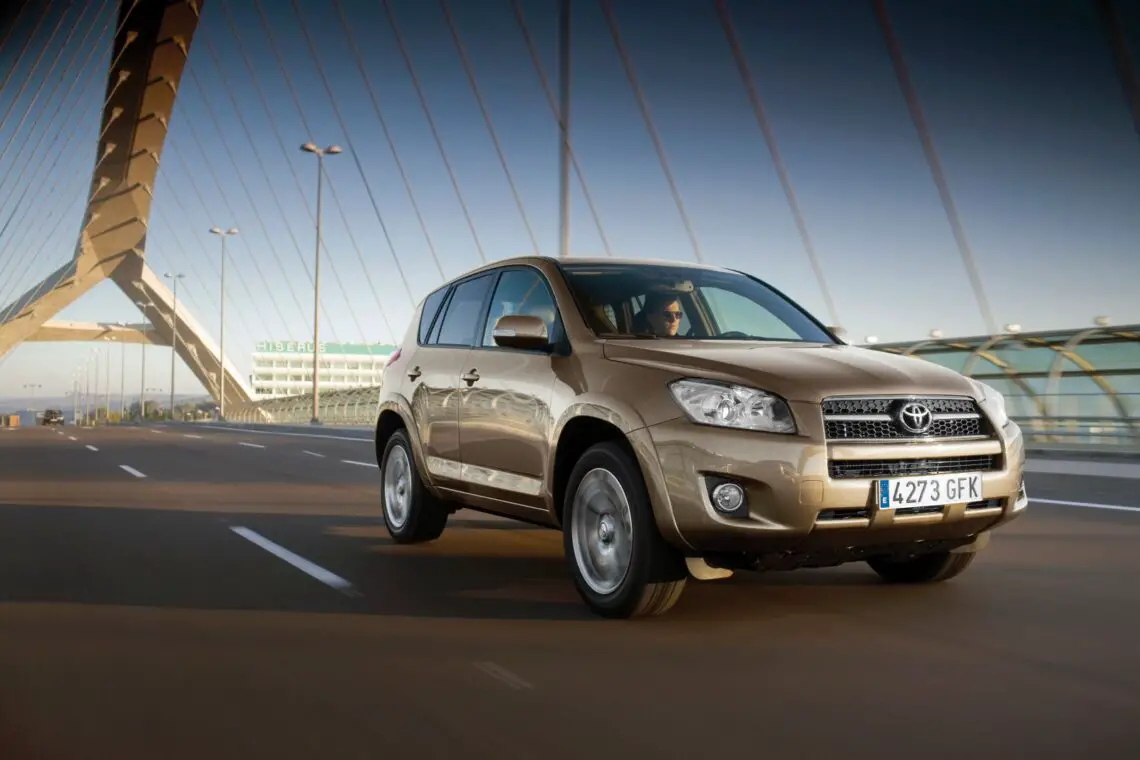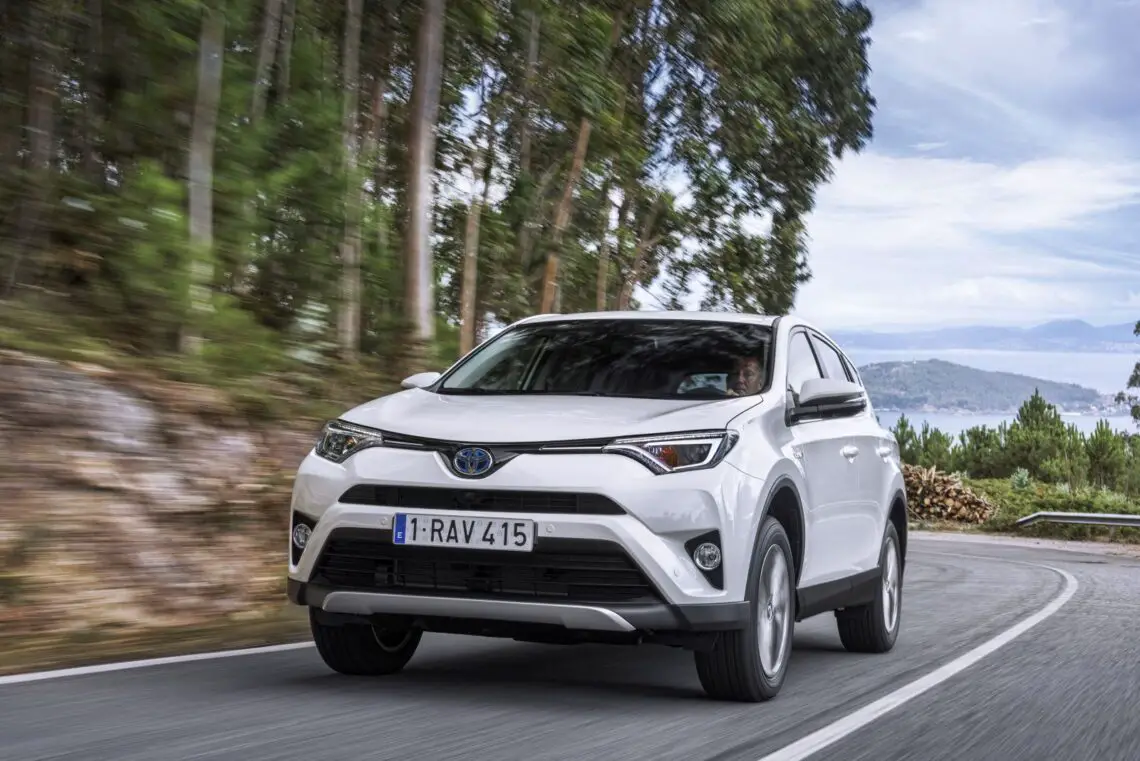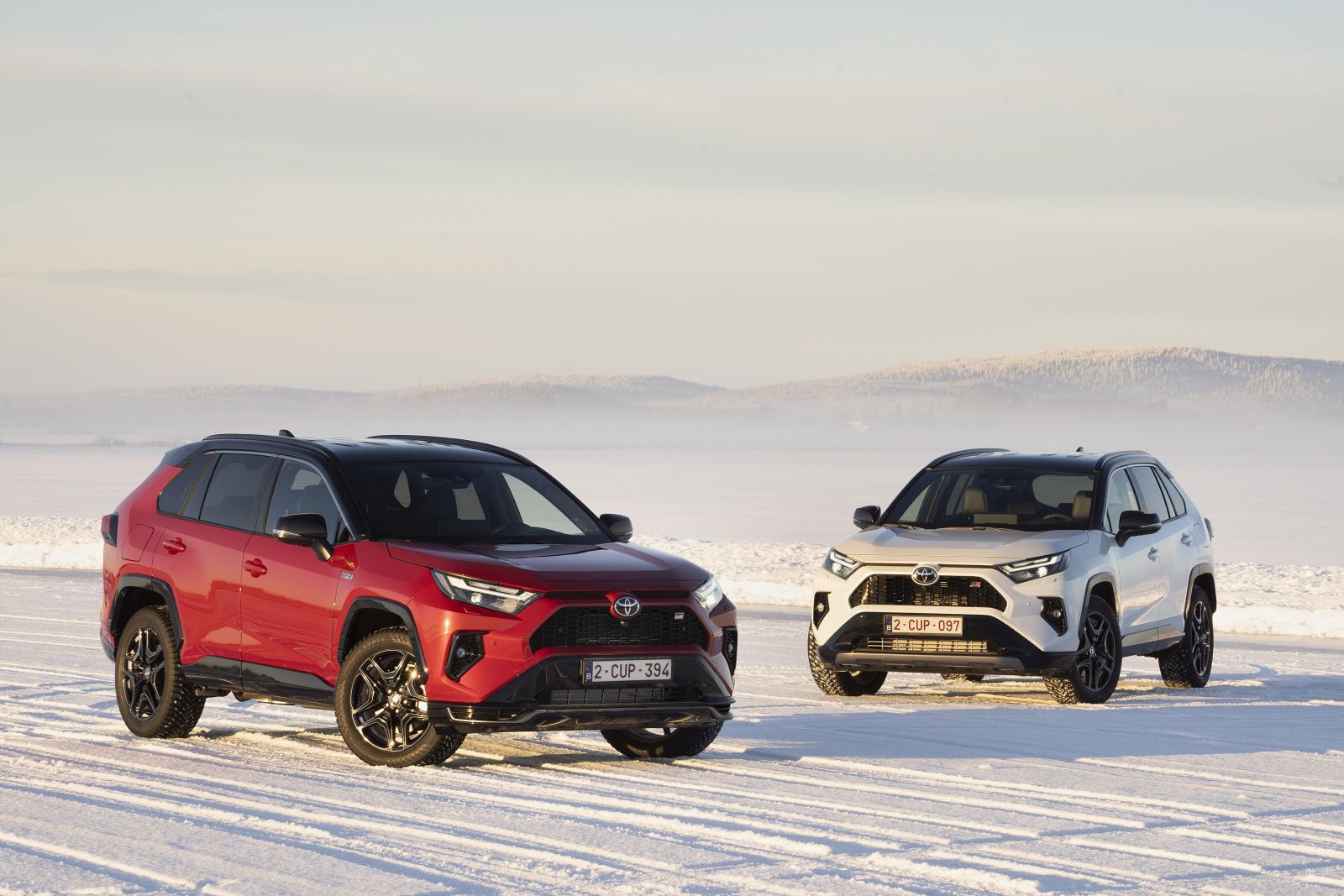Toyota RAV4 blows out thirty candles
The beginning
The idea behind the RAV4 (Recreational Active Vehicle with all-wheel drive) was first expressed in the RAV-FOUR concept car at the 1989 Tokyo Motor Show, signaling Toyota’s interest in a compact model with all-wheel drive. This was just a design study, without the details needed for a real development model. The car was enthusiastically received by the public. In 1991, the project was given the green light and development began. In March 1994, the RAV4 was unveiled at the Geneva Motor Show. It was a bold move by Toyota: a four-wheel-drive compact SUV with a self-supporting body. You hardly came across the term SUV at that time, but from the beginning of sales in May 1994, that changed.

First generation, 1994 – 2000
Toyota designers created a bold, fun new look for the original RAV4, breaking with conventions by giving it striking curves and unique lines. A spare wheel at the rear referenced the RAV4’s off-road capabilities, but the fresh design was suitable for both rural and urban environments. In its original form, the RAV4 – in the Netherlands the FunCruiser – was a compact two- or three-door model only 3.69 m long. Power came from a transverse 2.0-liter gasoline engine with 94kW (129 hp), combined with permanent all-wheel drive. Innovations destined to become the norm included a lightweight monocoque body and independent rear suspension. The RAV4’s high driving position provided better visibility, while its compact size made it easily maneuverable.
Its agile handling and passenger comfort were more like that of a hatchback than an AWD vehicle. In 1996, the range was expanded to include a five-door version (4.1m long) and the option of front-wheel drive, while a three-door soft-top followed. In 1997, a battery-electric (BEV) version with front-wheel drive was launched in select markets. This was good for a modest 45 kW (63 hp). With nickel-metal hydride batteries under the floor, this version had an estimated range of about 200 km.

Second generation, 2000 – 2006
The new millennium brought a second-generation RAV4, developed from the experience gained from its groundbreaking introduction. A new platform, new suspension and full-time AWD provided energetic and comfortable handling both on and off road. Interior comfort was also improved: new materials, a larger sliding range of seats and different rear seat configurations provided a functional and comfortable cabin.
Steps were made in the area of sustainability thanks to the extensive use of easily recyclable Toyota Super Olefin Polymer (TSOP) and recycled sound deadening products. The three- and five-door versions grew by 5.5 cm and 4 cm, respectively, over the first-generation RAV4. Two gasoline engines were offered: a 1.8-liter with 92 kW (125 hp) and a 2.0-liter with 110 kW (150 hp). The full-time AWD featured a central limited slip differential, while customers could choose a Torsen rear differential as a factory option. In 2001, a diesel engine was offered for the first time in the RAV4: a 2.0-liter D-4D direct-injected engine with 85 kW (116 hp).

Third generation, 2006 – 2012
With the third generation, the RAV4 grew and evolved and received a new, more refined appearance. The new RAV4 became exclusively a five-door car, reflecting changing customer preferences and demands. Based on a completely new platform for the third generation, the new model was 19 cm longer and a long-wheelbase version was also produced for sale in the United States and other markets. The model marked the debut of a new all-wheel-drive system from Toyota with an electronically controlled clutch that operates automatically based on the car’s speed, throttle control, steering angle and G-forces.
The driving characteristics of the RAV4 were further refined and for the first time the RAV4 received Downhill Assist Control and Hill-start Assist Control. Engine choices were also expanded, with a 2.0-, a 2.4-, a 2.5- and a 3.5-liter gasoline engine, plus a new 2.2-liter diesel engine. In the Netherlands, the 2.0-liter gasoline engine and the 2.2-liter diesel engine were delivered.

Fourth generation, 2013 – 2018
With the fourth generation RAV4, the wheelbase was standardized worldwide and the length of the car increased again, by 23.5 cm, contributing to 47 percent more luggage space compared to its predecessor. The all-new suspension is designed to improve driver comfort and engagement without sacrificing stability. Advanced AWD technology was introduced with the new intelligent Dynamic Torque Control system and the addition of two new features: cornering control and a sporty driving mode. The choice of powertrains originally included 2.0- and 2.5-liter gasoline engines and 2.0- and 2.2-liter diesel engines.
In 2016, the RAV4 underwent its biggest change to date. A hybrid version was introduced for the first time, Toyota’s first compact hybrid SUV, with a total system power of 145 kW (197 hp) and E-Four electronic all-wheel drive. The hybrid powertrain not only delivers the performance drivers should expect from Europe’s most powerful RAV4 to date, but also the lowest fuel consumption in its class – thanks in part to superior aerodynamics – and low CO2 emissions.

Fifth generation, 2018 to date
The fifth generation was launched in Europe in early 2019. A year later, the RAV4 reached a special milestone: the world’s ten millionth RAV4 was sold then. It was the first SUV built on a Toyota New Global Architecture platform. As a hybrid model, it uses Toyota’s fourth-generation hybrid technology along with a new 2.5-liter Dynamic Force hybrid engine. This was followed in 2020 by the first RAV4 Plug-in Hybrid, the most powerful and efficient RAV4 ever built. With 225 kW (306 hp), a 75-kilometer electric range, rapid acceleration and low CO2 emissions and fuel consumption, the RAV4 Plug-in Hybrid suited yet another new buyer group.
GR Sport (2023 to now)
The latest chapter in the RAV4 story is the new RAV4 GR Sport, an extension of the range with styling and equipment features that exude sportiness and sophistication inspired by Toyota Gazoo Racing. The RAV4 GR Sport features sportier looks, 19-inch alloy wheels and exclusive design details, complemented by further suspension improvements. The modified suspension, which includes new stiffer springs and shock absorber settings, improves handling and provides a more engaging driving experience.
Best-selling SUV
By staying true to its bold original philosophy and responding to customers’ changing needs, the RAV4 has become an automotive icon and sales success story around the world over the past 30 years. It was the best-selling SUV worldwide in 2018 and 2019. The RAV4 reached the milestone of 14 million units by the end of 2023 worldwide, including more than 2.5 million in Europe. Hybrid or plug-in hybrid powertrains now account for 91% of new RAV4 sales in Europe, where the largest markets are France, Italy, Poland, Spain and the United Kingdom.

